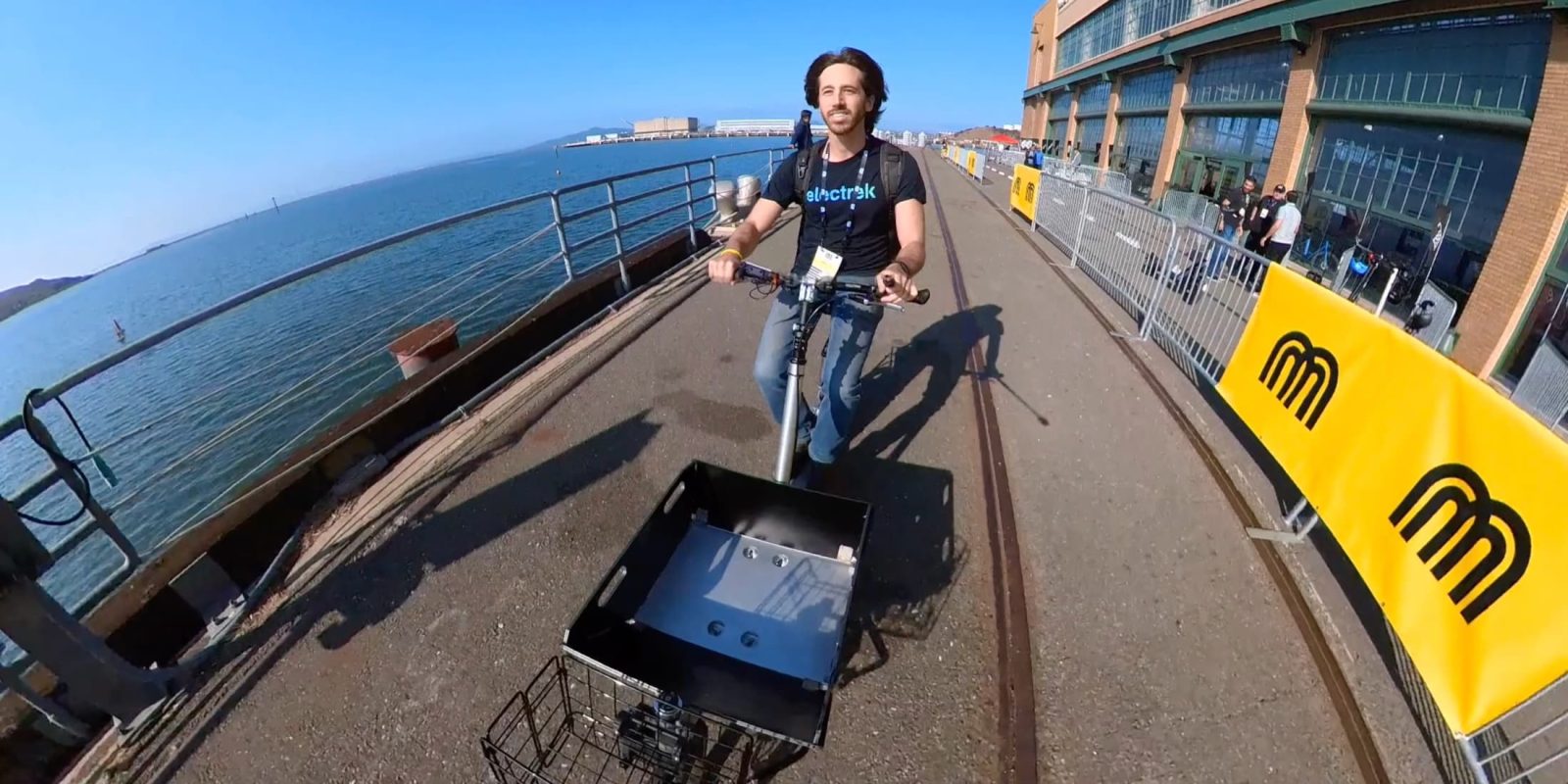
Micromobility America returned to the San Francisco Bay Area earlier this month to showcase the latest micromobility products, highlight new releases, offer test rides, hear from insightful company leaders and politicians, and basically nerd out about electric mobility.
From new e-bikes and e-scooters to innovative electric roller skates and even electric micro-cars, there was a bit of everything under the sun.
And with a combination of company meet and greets, test rides, and speakers, the event had a wide range of engaging activities for anyone interested in the latest forms of micromobility and the policies that surround those devices and companies.
The event included some of the most interesting, innovative, and eye-catching mobility products out there, and I was on-site to take it all in over two days.
Here’s a collection of some of the coolest stuff I saw, listed in alphabetical order to avoid choosing favorites. (That’d be like asking who your favorite child is!)
Apollo Scooters
The team from Apollo was on site to show off their latest innovative electric scooters, including their newest models of the Apollo City and the Apollo Pro. Both of these scooters employ more of a ground-up design than we’ve seen from most electric scooter companies.
Instead of throwing together a bunch of à la carte parts, Apollo designs its scooters itself, ensuring they not only have the most unique e-scooters out there but that they also address the ever-growing mass of community feedback they receive from their tens of thousands of electric scooter customers.
I made sure to take a spin on the Apollo City Pro, having previously reviewed the slightly lower spec Apollo City. Both are fast and comfortable e-scooters that employ the company’s variable regenerative braking, meaning you can basically forgo touching the mechanical brakes entirely, instead relying on the motor’s regenerative braking to slow and stop the scooter. The Apollo Pro’s fancy features like wireless phone charging and surround lighting make it a standout in the industry — even before you consider the 43 mph (70 km/h) top speed!

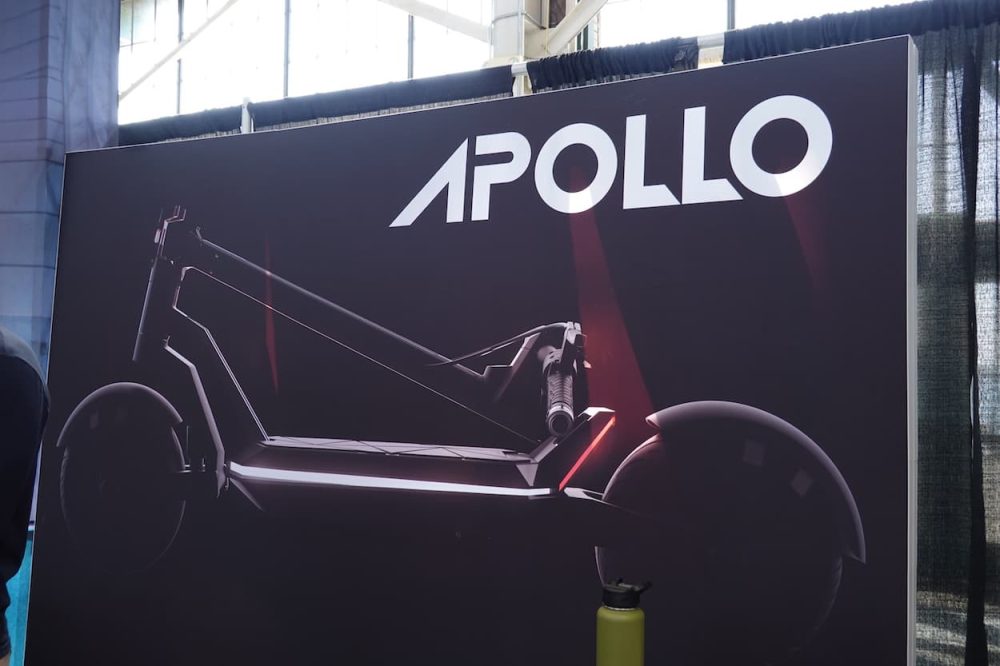
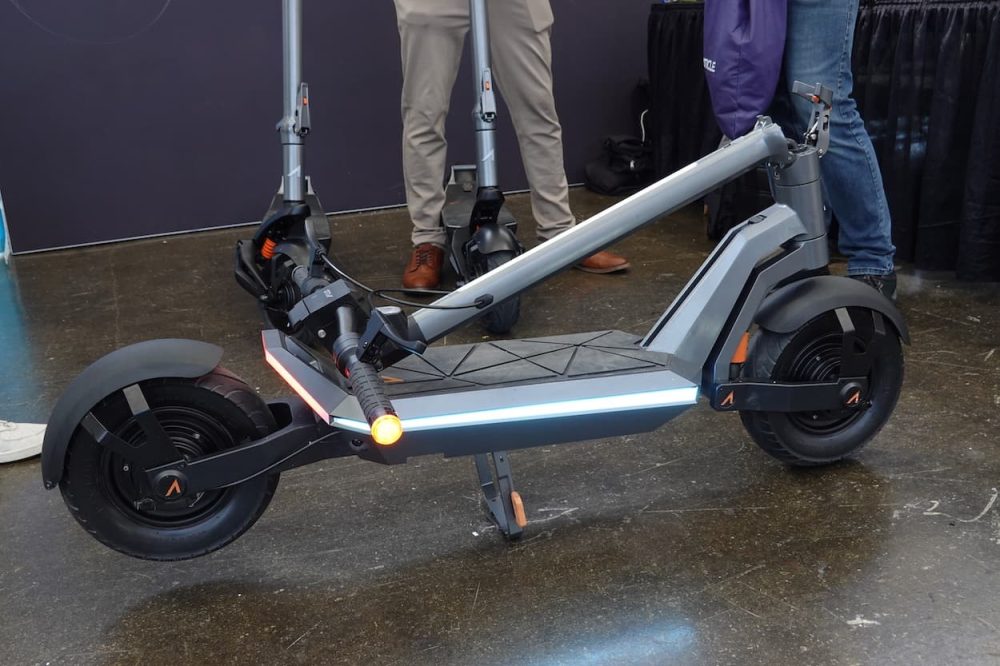
Artful Design Group’s Airglide electric scooter
I’ve seen a lot of different types of micromobility products but never anything quite like this. While still a prototype, the Airglide electric cargo scooter was on site to show off what could be possible with a seated cargo e-scooter.
In addition to offering plenty of space for cargo in the front bucket, the patent-pending scooter is designed with a saddle for comfortable seated riding and even collapses down into a cart that can be wheeled around through a grocery store to do your shopping.
Don’t expect to find this one in stores this year, but the future could see big things for a small-yet-mighty folding e-scooter like this.
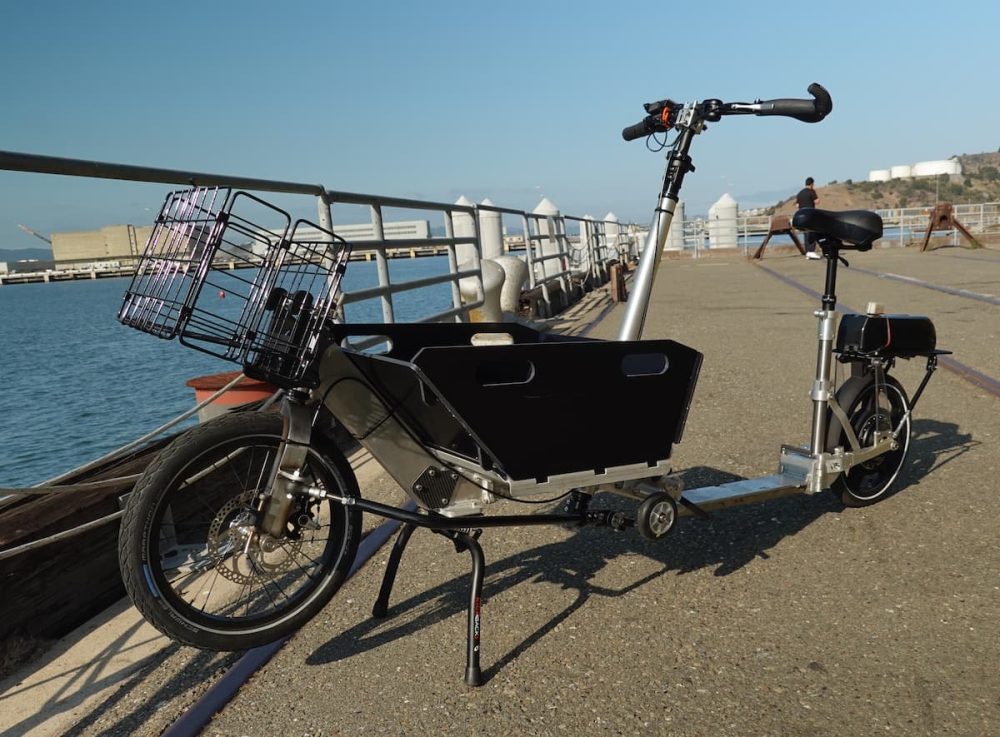

Aventura X electric scooter
Vespa vibes without the Vespa price! The Aventura X electric scooter has all of the old-timey charms of a classic Piaggio-style scooter, yet with a $3,300 price tag that is around half the cost of a Vespa Elettrica electric scooter.
I had the chance to test ride one, which you can see in my video from the event above.
The scooter isn’t the fastest out there, maxing out at just 30 mph (48 km/h). But it’s a fun, smooth, and easy-to-manage ride that will have you enjoying the slower pace of life.
It’s just so much fun that you’re not thinking “I wish this thing went faster.” Instead, you’re mostly wishing you had a beautiful girl on back en route to a picnic in the Italian countryside.
I’m not sure it will rival a CSC Monterey, but it gets close.

Bo electric scooter
Bo’s electric scooter looks like the designers threw out the conventional Chinese electric scooter that everyone seems to build these days and, instead, drew up their own idea of how e-scooters should be built.
The head tube is basically as tall as the stem, giving them a much wider spacing between steering bearings and resulting in a much stiffer and safer-feeling scooter.
The body panels give it a sleeker appearance too, making it look as good as it feels.
Big props to the designers on this one!
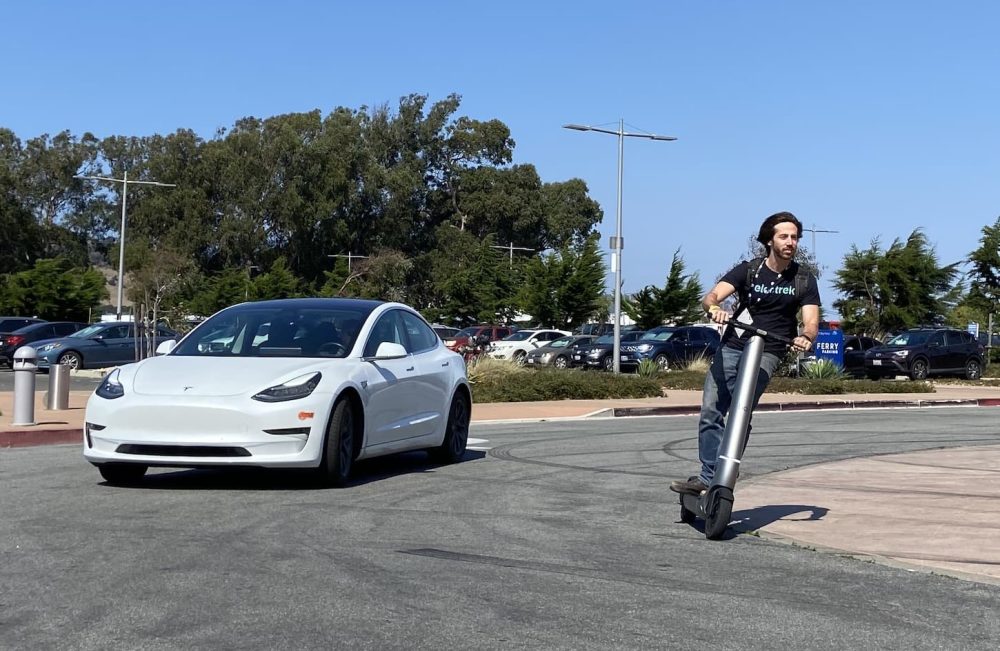
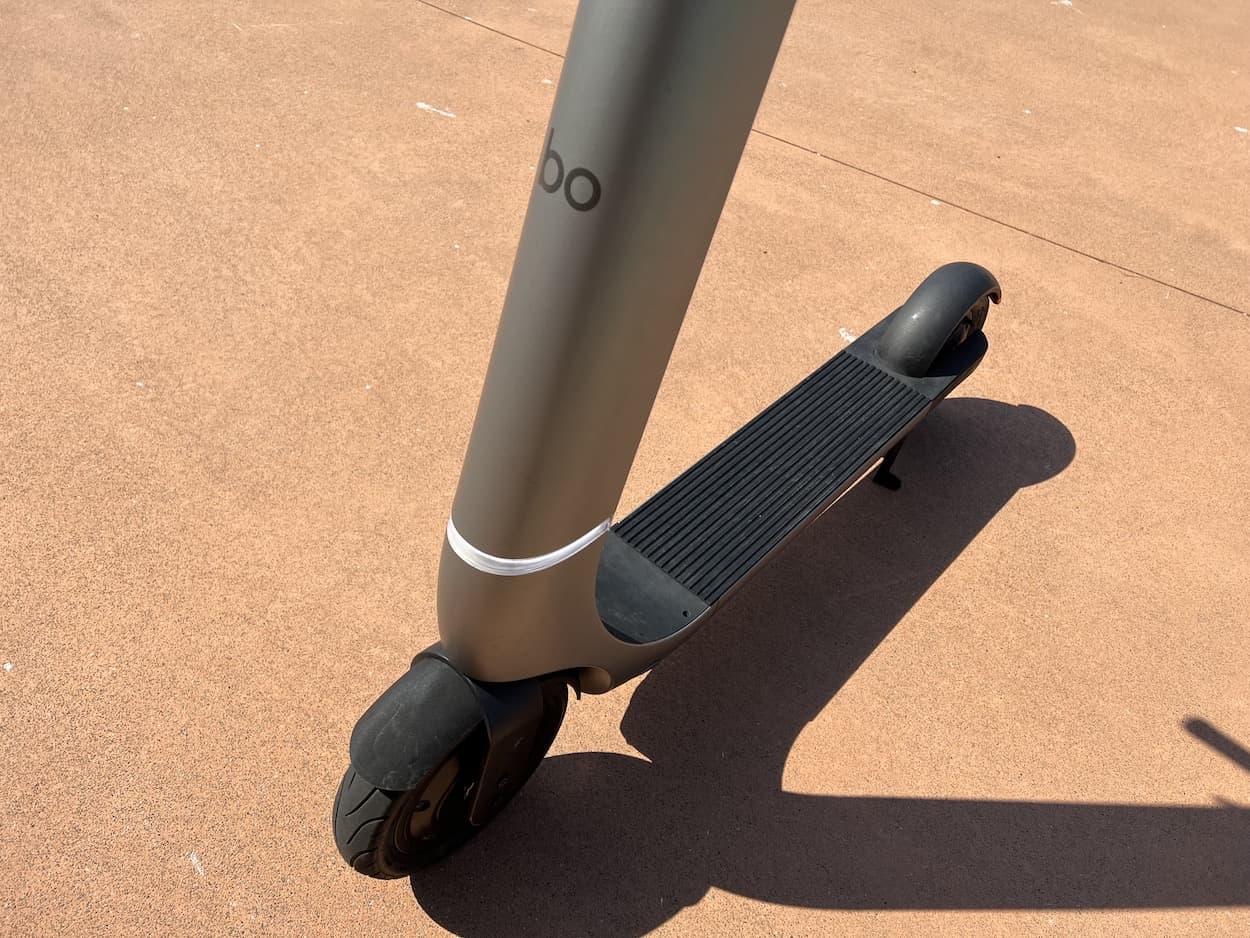

Boaz Bikes
I had a blast meeting the team behind Boaz Bikes, and it was quite obvious that their passion for their product and service really shines through.
The takeaway message that they kept coming back to was safety. They operate as a rental service, but they also sell their micromobility vehicles to people that enjoy the unique form factor and want to own instead of rent.
Despite the name, these “bikes” are actually scooters. They have a low seating position that allows riders to feel stable, with a low center of gravity, and easily put both feet on the ground if they need to quickly regain their balance.
With suspension, baskets, lights, fenders, and disc brakes, the little scooters have basically everything a rider needs in a small utility scooter. Plus, the max speed of 30 mph on the private version makes these a fast urban vehicle that can easily replace a car.
I didn’t get a chance to hop on one of these at the show, and now I regret it. They look so awesome – I really need to try one out. Maybe I’ll get lucky after they read this, and they’ll want me to do a review on it in Florida. Fingers crossed!
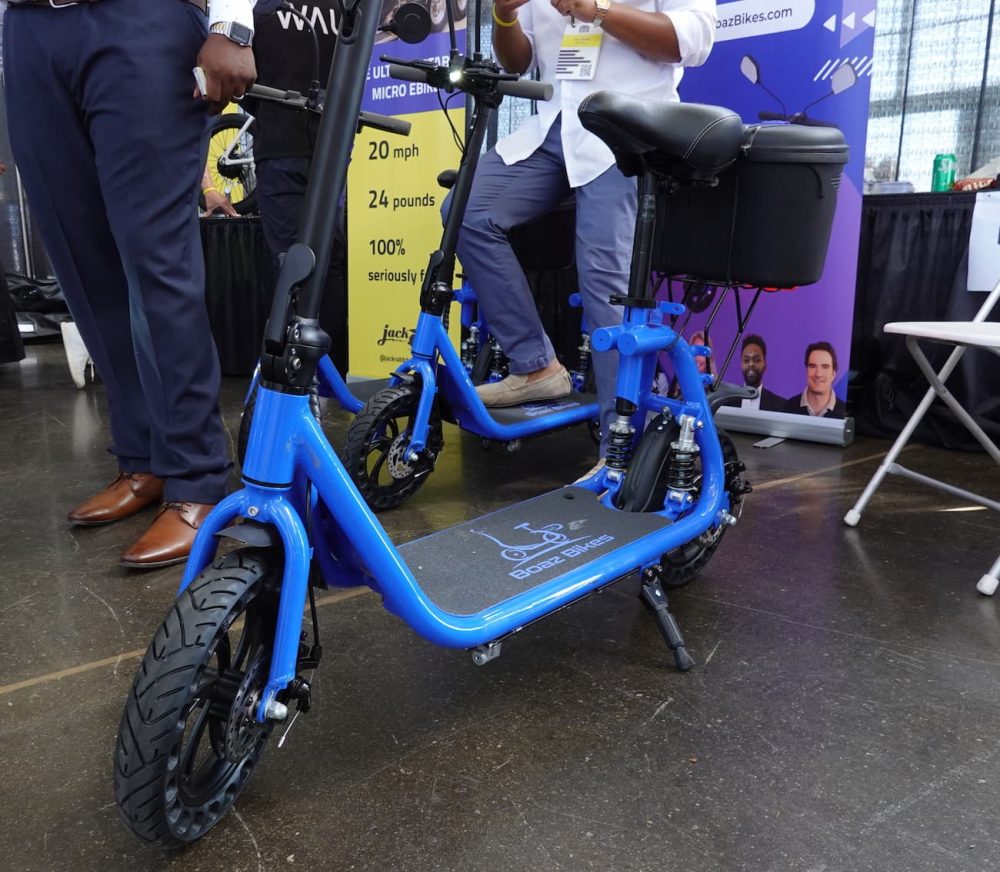
Eli electric micro car
The Eli electric micro isn’t a car at all, but rather is listed as a quadricycle where it is already sold in Europe.
That puts it in a class of vehicles that fall somewhere between motorcycles and cars, enjoying the more lax regulatory environment of the former and the enclosed weather protection of the latter.
In the case of the Eli, it drives around at a max speed of around 25 mph (40 km/h) and offers a carlike interior, complete with a micro-trunk in the back for a couple of backpacks or other small cargo.
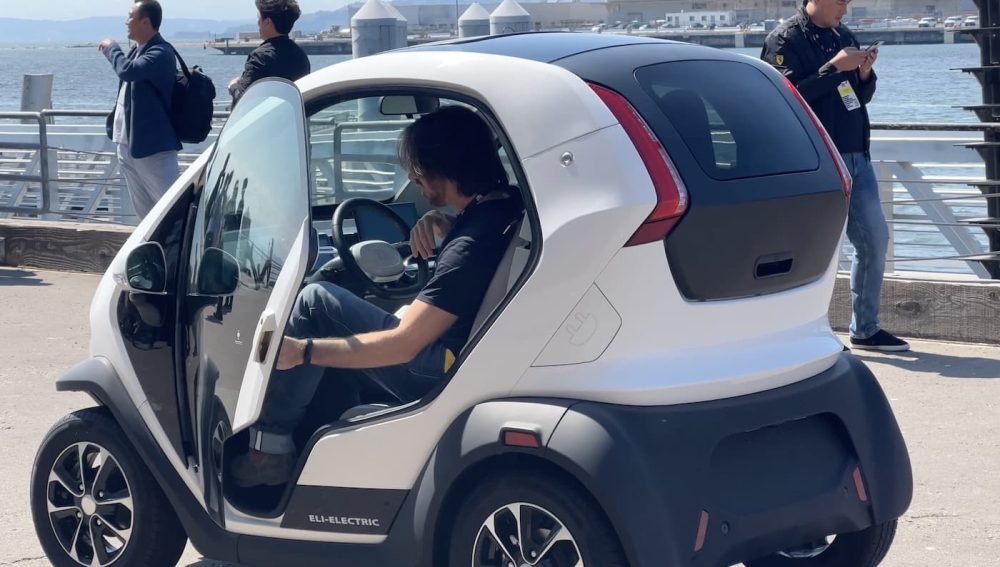
The Eli was definitely one of the largest electric vehicles at Micromobility America, but it was still quite small compared to real cars.
Interestingly, the glass doors give it a larger interior feeling than it deserves, making the cramped interior feel much roomier.
I had the chance to give one of the first Eli vehicles a quick test drive last year in Milan, which you can see in my brief video below.
Escend Blades electric roller skates
These Escend Blades are absolutely wild and push the lower end of the micromobility size spectrum even further.
The concept is simple. They’re like roller skates – but electric. That’s it. Small, light, effective.
They use electric skateboard parts, including an e-skate controller to wirelessly communicate with the skates. That gives riders a thumb-controlled throttle and brake dial in their hand, without requiring a tether or wired connection.
It seems like there are dedicated boot versions and also naked skate platforms like those old-school roller skates that strapped onto kids’ shoes from the 1950s.
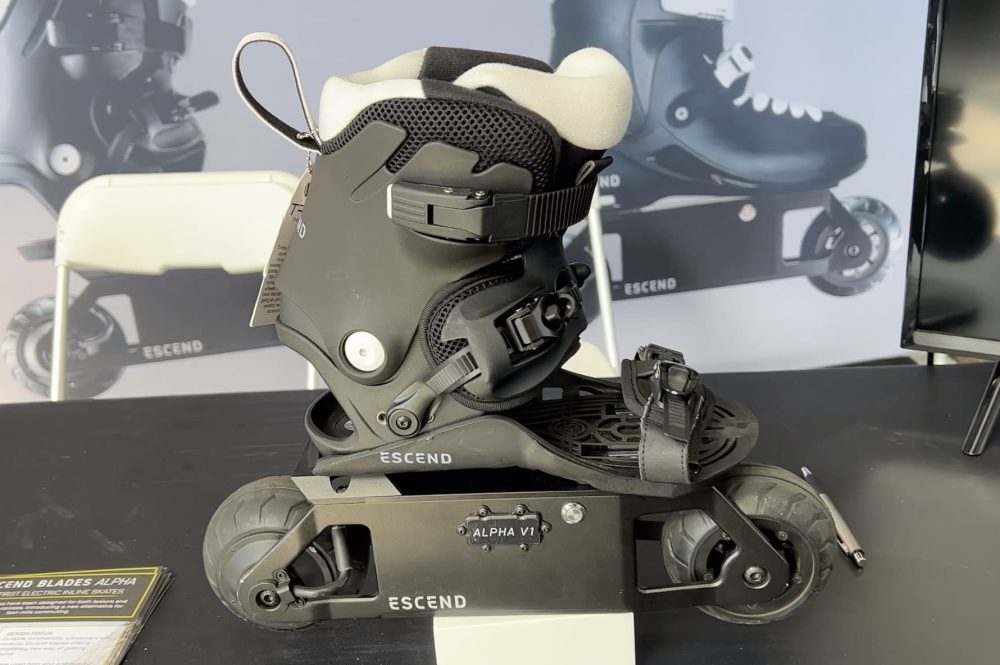
Faction’s driverless Arcimoto
Faction was at Micromobility America with its driverless Arcimoto designed as an autonomous delivery vehicle.
It’s pretty trippy to look inside and realize that both seats have been replaced by a giant, open area for cargo and goods.
The Arcimoto FUV platform is already quite striking, but a robotic version is straight-up SciFi if you ask me.
More “normal” Arcimoto FUVs were also at the show, including one that the company let me borrow for a couple of days to use as my wheels while I was in San Francisco. Flying over the bridges at 80+ mph and getting looks from drivers around me was definitely a highlight of the trip, but I’ll have more on my few days of driving an Arcimoto FUV soon.
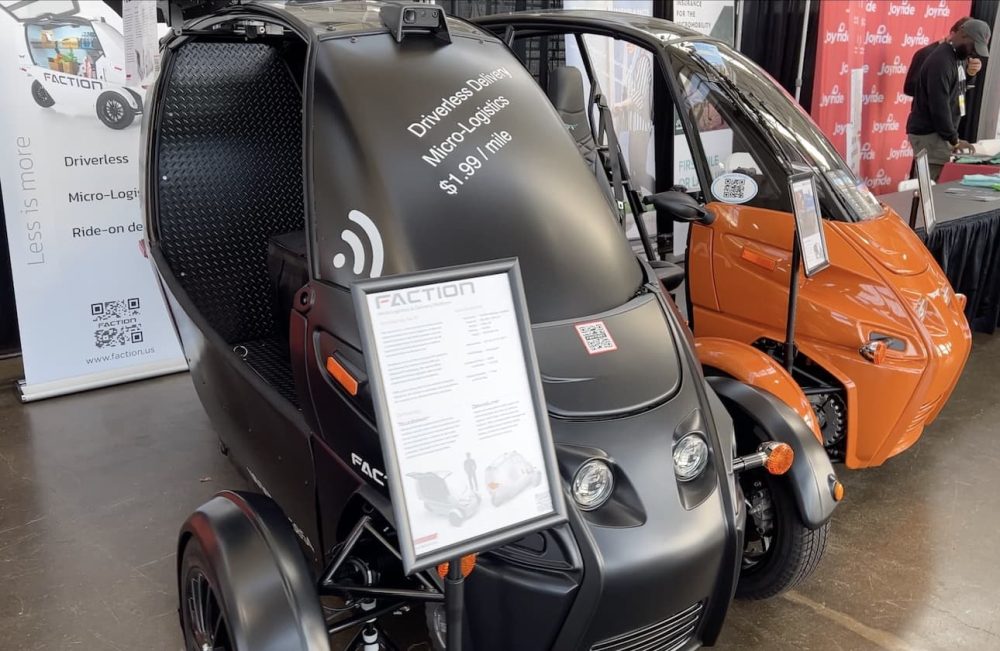
Hunter Boards
Portuguese electric skateboard startup Hunter Boards showed off its latest highly-engineered electric skateboard at Micromobility America.
The board uses what appears to be a modified double wishbone suspension system that is more at home on large four-wheeled vehicles than skateboards.
It looks like a mechanical engineering student’s dream and gives the boards a futuristic yet still mechanical vibe.
Combined with the high performance and removable batteries, the design helps make these Hunter electric skateboards memorable in the industry.
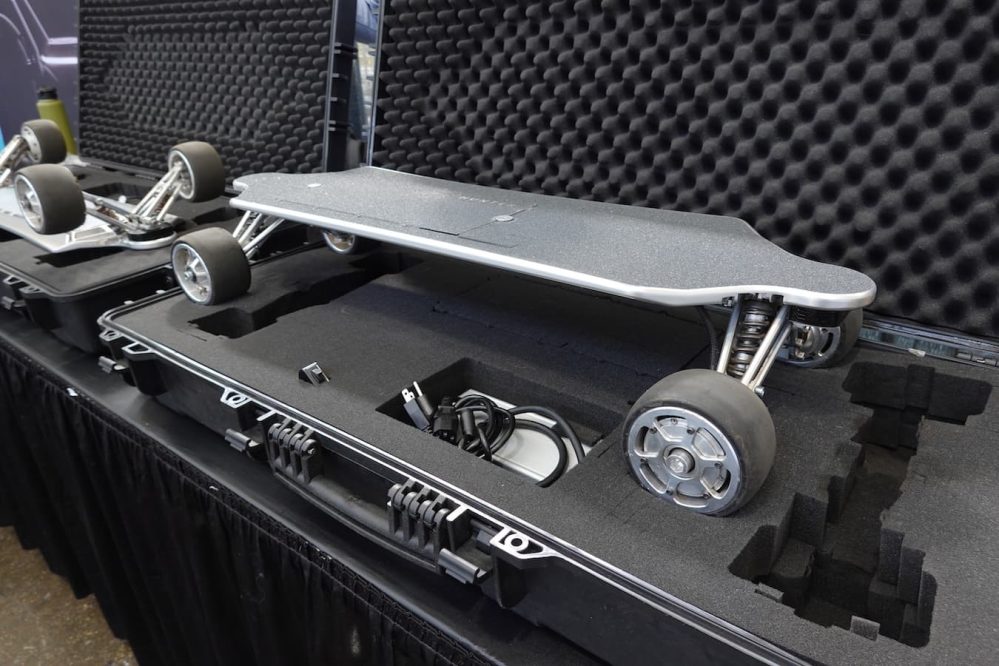
JackRabbit
The JackRabbit brings a smile to my face every time I see one.
Referred to as a micro-bike, these are technically seated electric scooters due to the lack of pedals.
They may look funny with that short wheelbase, but they have pretty good performance.
They get up to 20 mph and have ranges of over 10 miles, despite their tiny batteries, meaning they’re great for short city commutes when riders want the stability of a bike but the size and lightweight design of a scooter.
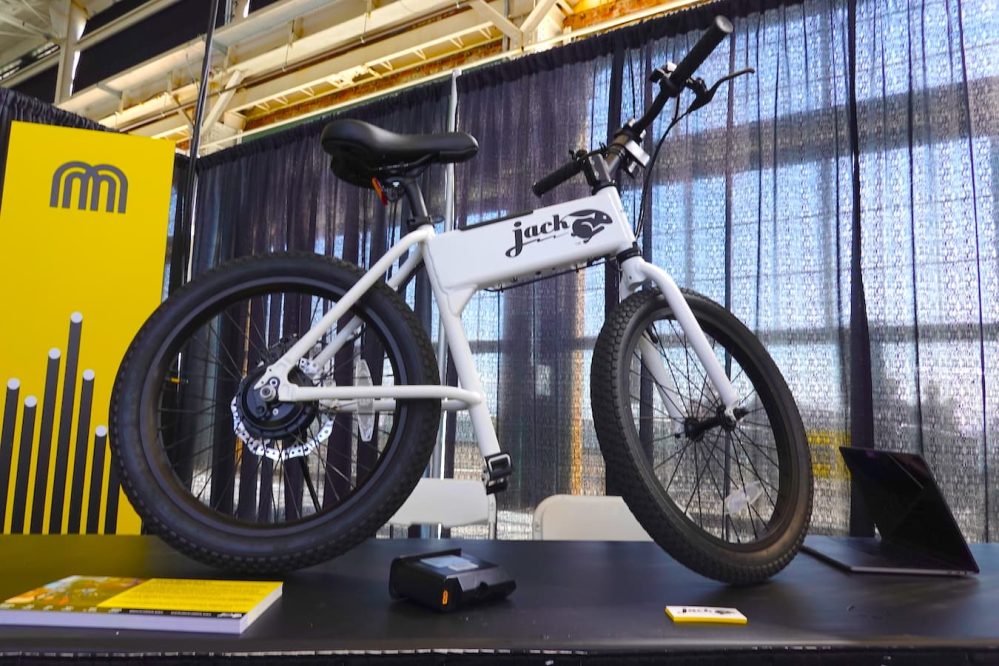
I had the distinct pleasure of reviewing one of these earlier this year, where I learned just how much fun this micromobility device can be.
You can check it out in my video review below. Trust me, you’re going to want to see me ride this thing. It’s not a circus bear on a tricycle situation, but it’s not the farthest thing in the world from that either.
Nimbus One
This is another one of those “What is it?” type of micro-EVs. The Nimbus One falls somewhere in the Velo-bike/micro-car/leaning e-trike trifecta. It’s another example of a vehicle that pushes the limits of what we consider to be micromobility.
The enclosed design makes it great for inclement weather that would cause many people to leave their bikes in the garage. But the narrow size and leaning design mean it operates more like a bike than a car, which should appeal to car-shunning cyclists.
And of course, the electric drive makes it easy and, more importantly, environmentally sustainable, which everyone should appreciate.
I can’t say for sure what it’s actually like to pilot. But I can agree that it’s fun to look at!
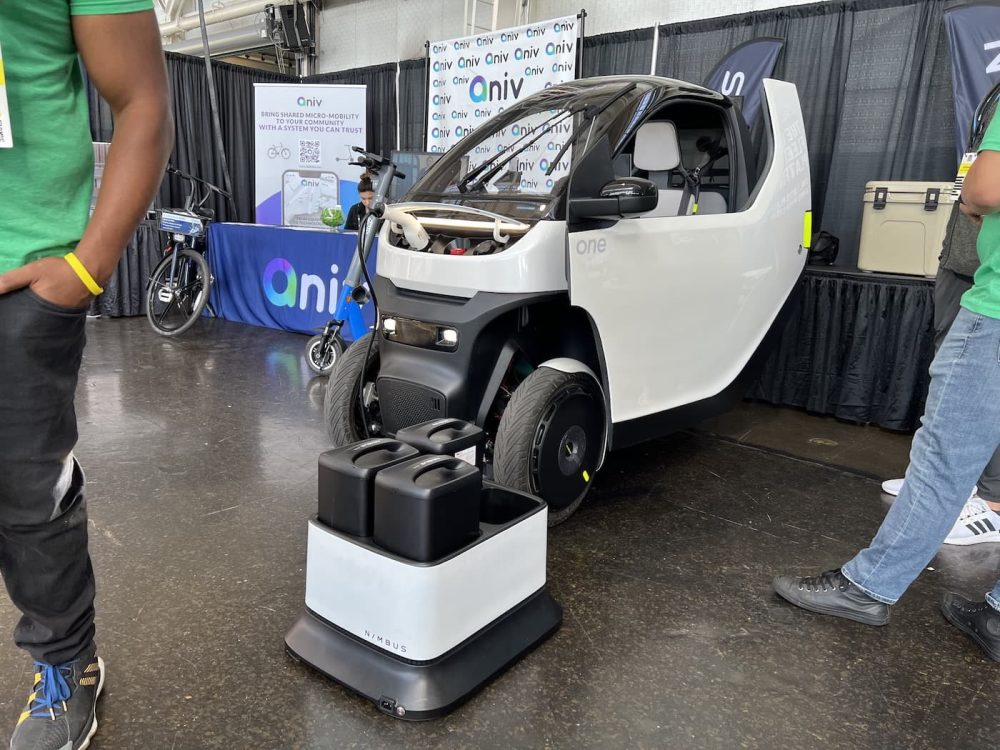
Pytes batteries
These guys say they’re the third largest battery suppliers in the micromobility business.
Frankly, based on the list of e-bike companies they rattled off as their customers, I’m surprised they aren’t in the first or second spot.
They were on-site to show off their wide range of batteries for electric bikes, scooters, and other micromobility devices.
It seems they make just about every type of battery under the sun. And bonus points, they’re fans of my videos! From now on I’m going to tell people, “Yeah, well you may not have heard of me, but I’m big in China!”



Veo Apollo
Tons of companies offer shared electric scooters or e-bikes. Lime and Bird at the big ones for many people, but dozens of other companies compete in the space.
No one has a two-seater e-bike quite like Veo though, who just rolled out the Veo Apollo in a debut at Micromobility America.
The Class 2 e-bike has a 750W motor in the rear wheel and gets up to a top speed of 20 mph.
It makes it easy to avoid calling for an Uber or Lyft – instead, take a friend with you on the back of a shared micromobility device. Right on!
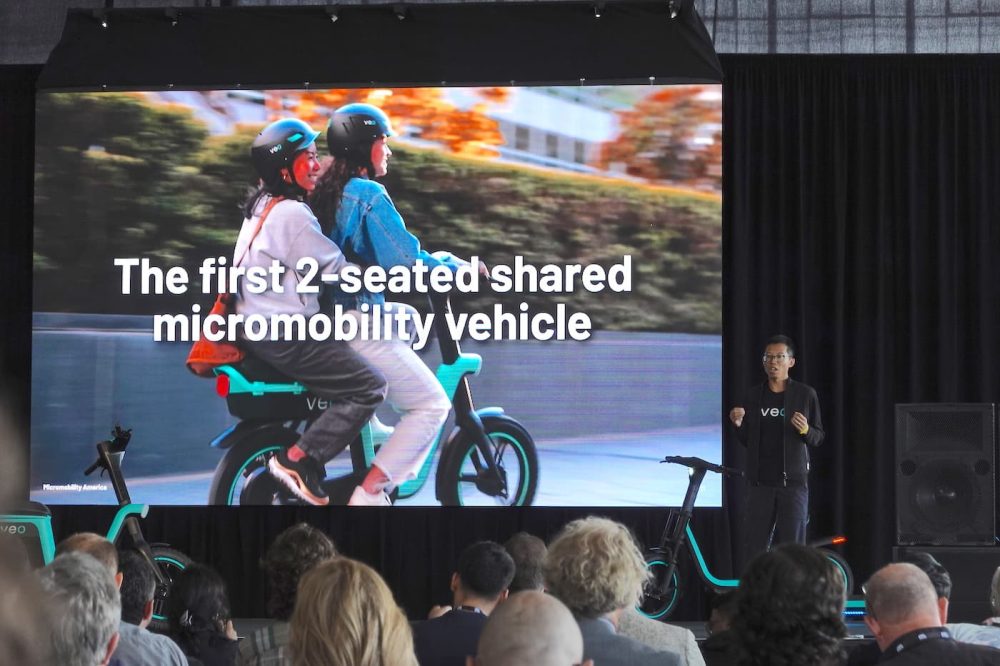
WAU Bikes
Sorry, WAU, you guys really screwed yourself when it comes to alphabetical order, getting left near the end of this post. That’s a shame because your bikes deserve to be at the top of so many lists.
Between the slick-looking battery case (with a 100-mile range battery!) and the neat frame-mounted rear lights, these are some awesome e-bikes that I really want to test out.
Those taillights even do double duty as turn signals and brake lights, and they are actually large and wide enough to serve those roles well, unlike many tiny gimmicky turn signals we’re starting to see on other e-bikes.
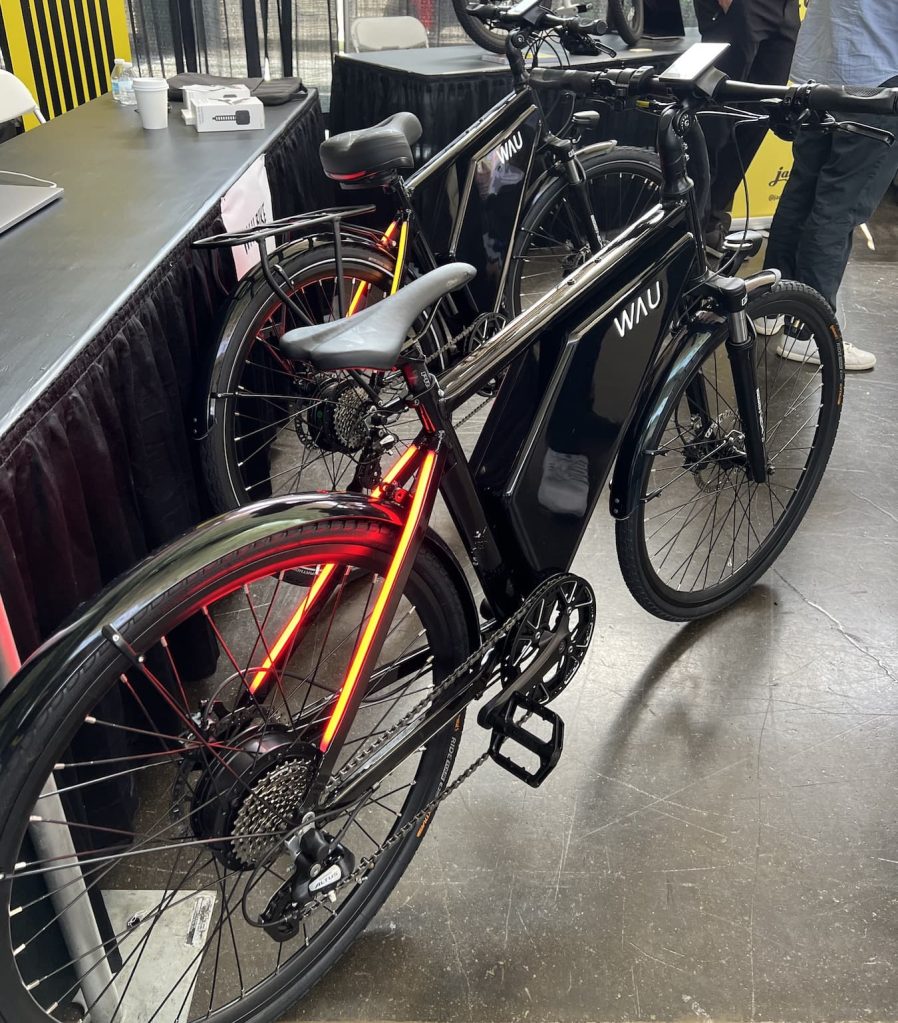
Weel
Last but definitely not least on the list is Weel, an innovative e-bike that offers something akin to Tesla Autopilot, but for e-bikes.
It’s designed to help riders who lack the skills or confidence to safely ride a bike and uses a steering tube motor to help adjust the steering for riders and keep the bike stable. Computer vision helps riders stay on course by tracking the edges of bike lanes and avoiding obstacles.
The bike is also designed to remove as many traditional hardware components from the bike as possible. For example, instead of a typical moving brake lever, the Weel bike’s brake lever is fixed and uses a strain gauge to measure how hard it is pulled.
It’s a wild and completely novel design. Time will tell whether or not the bike will be commercially viable when it eventually hits the market.
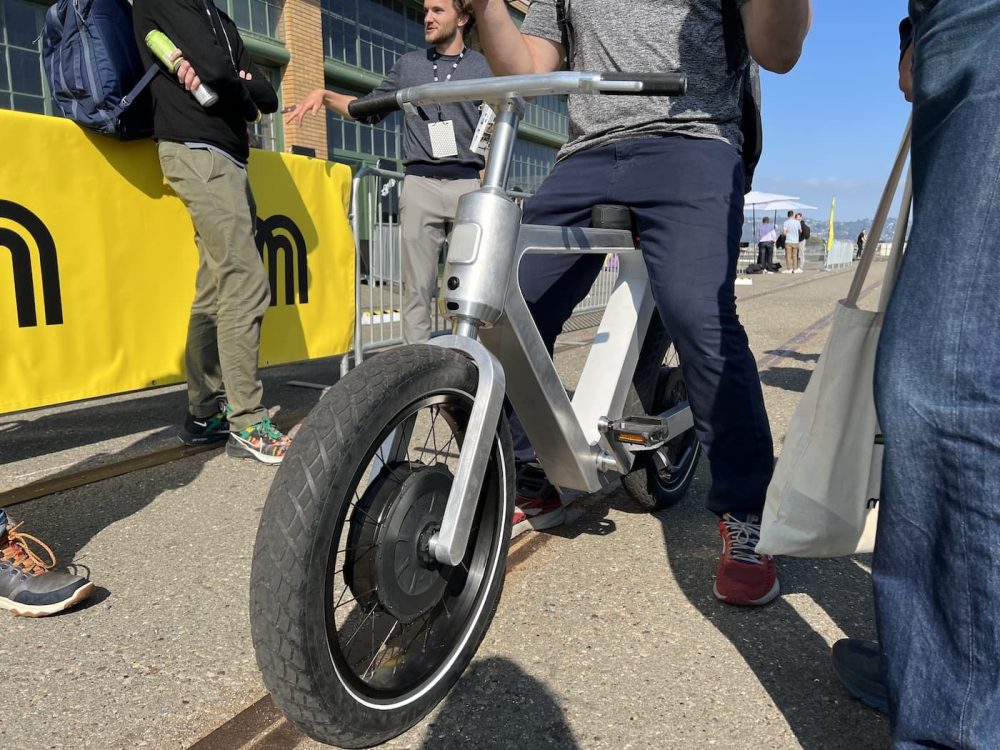
Make sure you check out my video of the event, embedded below. There, you’ll see all of these companies up close, plus even more!
And if you live across the pond, keep your calendar marked for June 8-9, 2023, when Micromobility Europe returns to Amsterdam!
FTC: We use income earning auto affiliate links. More.






Comments